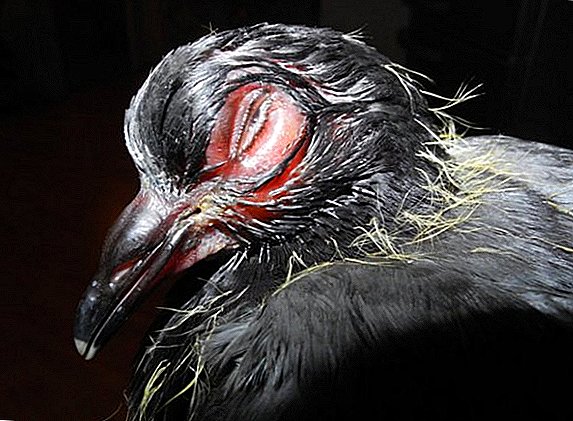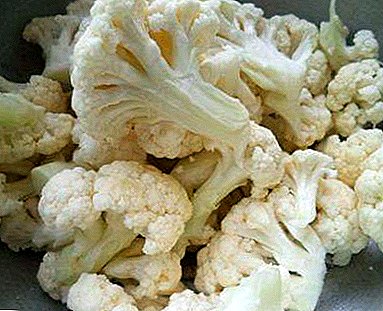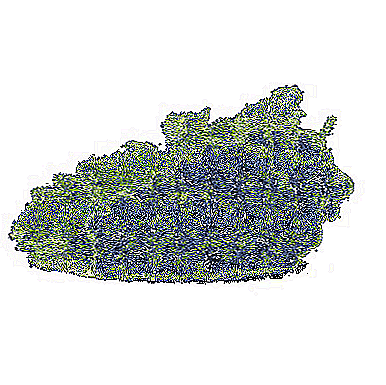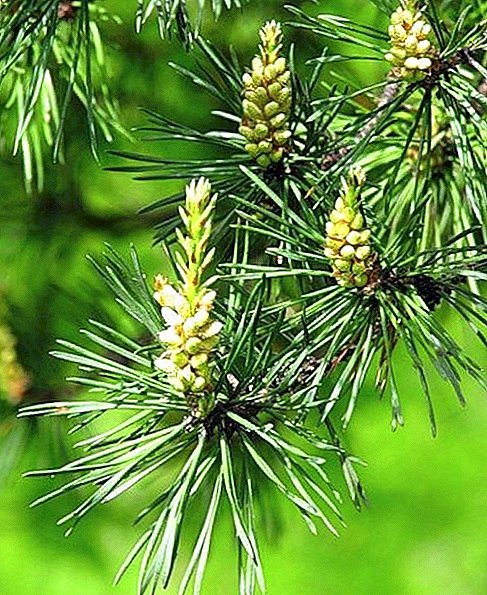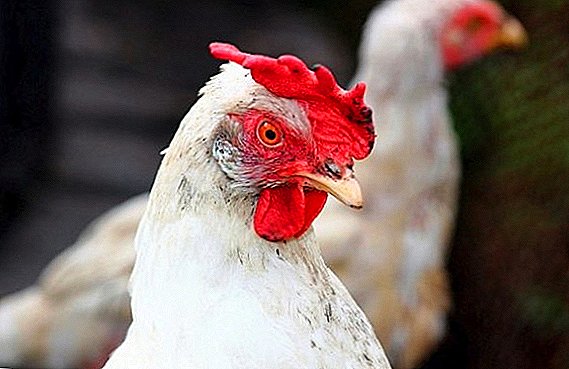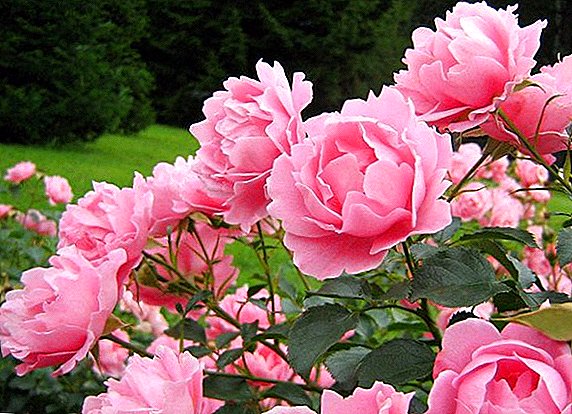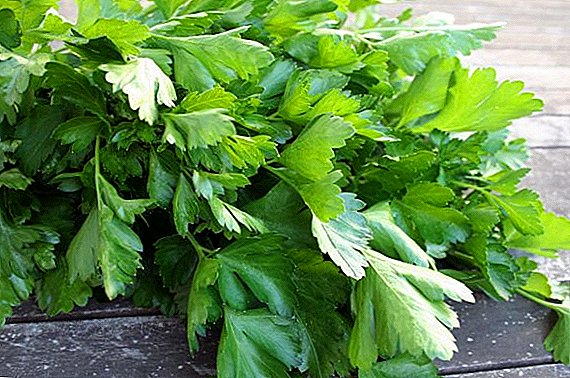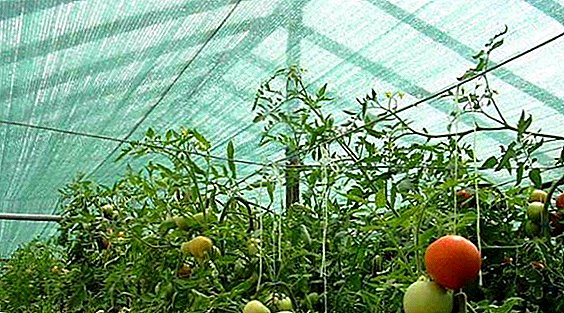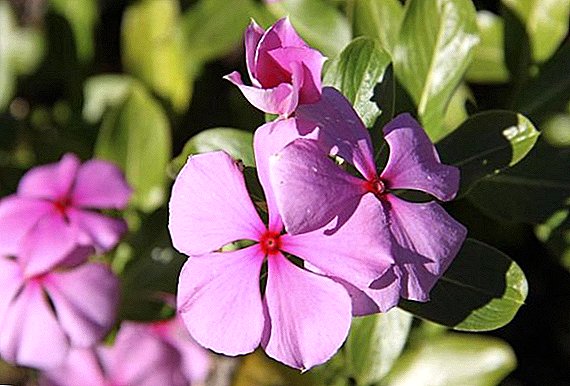 Bright and attractive catarantus can be seen as an element of the external decor of open terraces and verandas, in landscape design, as well as as a decoration for your home or office interior.
Bright and attractive catarantus can be seen as an element of the external decor of open terraces and verandas, in landscape design, as well as as a decoration for your home or office interior.
These "clear, clean", translated from Greek, the flowers have a delightful appearance, require minimal care and are ready to delight with their beauty almost all year round.
Brief description of the plant
Quarantus - attributed to grassy evergreen and shrubs, family Kutrovye. In its natural environment, it can be found in Cuba, Java, the Philippines, Africa, Indochina, and Indonesia, but it is most common in Madagascar, where the quarantus is represented in more than 7 species of different beauty. It can be grown as a perennial plant as a home culture and in greenhouses and as an annual in the garden.
In subtropical conditions, the plant can grow to the level of 1.5 m, while home-grown specimens reach 50-60 cm.
The stem is fleshy and erect with branching at the apex, with time it becomes woody. Interestingly, by the color of the bark, it is possible to tell which colors will bloom, since white flowers appear on the plant with green bark, and pink - anthocyanin.  The root of the cataractus is powerful, has a core structure with a well-developed main root, the size of which can reach 20-30 cm in depth. Root roots are presented in large quantities and have a characteristic, specific smell. Young roots are bald, without root hairs.
The root of the cataractus is powerful, has a core structure with a well-developed main root, the size of which can reach 20-30 cm in depth. Root roots are presented in large quantities and have a characteristic, specific smell. Young roots are bald, without root hairs.
The leaves of the flower are small in size, have a slightly elongated shape, 7 cm long. They are painted in dark green with a glossy finish and a white vein in the middle of the leaf plate.
The blooming of the quarantus is very beautiful. The whole plant is densely covered with large round flowers, 4-5 cm in diameter, with a flat corolla and 5 petals, the color of which is very attractive. Among the natural and hybrid colors should be highlighted: snow-white, light purple, blue-lilac, orange, pink flowers with a bright contrast eye.
The period of active flowering of the quarantus is from the end of spring to mid-autumn, when the whole plant is covered with a thick cap of rich flowers. When the period of temperature decrease comes, flowering fades away, and in its place fruits are formed, inside of which there are about a dozen of seeds of elongated shape. The pink type of quarantus at home rarely forms seeds.  The value of the plant is determined by its unique composition, containing almost 80 species of various alkaloids, which are widely used for medical purposes, in agriculture. On the basis of these substances make effective drugs to combat leukemia, diabetes, as well as drugs psychogogic and narcotic action, strong antispasmodics.
The value of the plant is determined by its unique composition, containing almost 80 species of various alkaloids, which are widely used for medical purposes, in agriculture. On the basis of these substances make effective drugs to combat leukemia, diabetes, as well as drugs psychogogic and narcotic action, strong antispasmodics.
Since Caratrantus contains a large number of alkaloids, in the natural environment of scaring animals with its bitter and toxic taste, it is necessary to take safety measures when keeping the plant at home.
Important! Quarantus is poisonous, so the plant should not be freely accessible to children and pets, and care should be exercised with gloves, protecting your hands from allergies and intoxication.
Growing seedlings at home
Growing quarantus from seeds is the most accessible and widely used method of breeding this plant. Seeds can be purchased in specialized stores, since it is, however, very difficult to get them by their own labor at home. This requires close attention to the process of growing a flower in a dormant period, that is, when the quarantus does not bloom, controlling the temperature, humidity and light levels, which should correspond to the plant's natural tropical climate. As a result, seed can be obtained by the beginning of spring.  The advantages of the seed method of reproduction are called:
The advantages of the seed method of reproduction are called:
- attractive plant appearance and a wide variety of seed varieties;
- their rapid germination;
- sow seed can be at any time;
- low cost of seeds.
- troublesome process;
- the ability to create conditions for germination;
- time-consuming process of obtaining seed independently.
Landing time
In order to grow carantus at home, it is sown for 60-70 days before the desired flowering, because you can plant seeds year-round. Most often, the planting process begins with the arrival of spring in order to get bloom in summer.  For the successful germination of seeds and seedling growth, it is necessary to provide a sufficient amount of light for at least 8 hours a day and, if necessary, use an artificial one - a fitball.
For the successful germination of seeds and seedling growth, it is necessary to provide a sufficient amount of light for at least 8 hours a day and, if necessary, use an artificial one - a fitball.
Important! When buying planting material is important to pay attention to the timing of its procurement and packaging, stale seeds can not germinate.
Planting tanks and ground
For planting quarantined required to prepare the ground. She must be:
- loose, airy;
- fertile;
- moisture permeable;
- acidity 5.5-5.9 pH;
- with a moderate salt concentration.
If the preparation of the soil is carried out independently, then it is necessary to combine leaf and sod soil in equal proportions, adding a part of coarse river sand and a little peat. All components are pre-disinfected, calcined in the oven, or treated with special means or a solution of potassium permanganate to remove possible diseases and pests. To increase the friability of the soil, it is recommended to apply perlite and vermiculite.
Instead of the substrate, you can use peat tablets, which do not require picking a plant. They are well moistened before making seeds.  Top dressings will help to provide long and magnificent flowering of carantus. If the plant is annual, fertilizer is applied once a week. For these purposes, a complex for flowering houseplants is used, which is diluted in water for irrigation in accordance with the instructions on the package. You can also use liquid dressing for indoor roses. If the plant is perennial and is grown at home, then it is fed a little less, 2 times a month, reducing the dosage of fertilizer by half. In the absence of flowering, feeding is stopped altogether.
Top dressings will help to provide long and magnificent flowering of carantus. If the plant is annual, fertilizer is applied once a week. For these purposes, a complex for flowering houseplants is used, which is diluted in water for irrigation in accordance with the instructions on the package. You can also use liquid dressing for indoor roses. If the plant is perennial and is grown at home, then it is fed a little less, 2 times a month, reducing the dosage of fertilizer by half. In the absence of flowering, feeding is stopped altogether.
Did you know? Quarantus is often confused with periwinkle, the plant was originally even attributed to this genus. Over time, botanists established obvious differences and isolated a separate genus for this tropical flower, and from the 18th century began to cultivate it for decorative purposes.
The flowerpot for the quarantus must be large, since the plant is rapidly developing and has a strong root system and it is impossible to prevent the drainage holes from overlapping the root processes. Flower transplantation occurs annually, with the diameter of the pot increasing by 3-5 cm.
When planting at the bottom of the pot lay out a layer of drainage in 3-4 cm. For these purposes you can use:
- expanded clay;
- pebbles;
- crushed stone of small size;
- broken brick
Seed preparation
The seeds of the quarantine require preliminary preparation before planting, for which they are soaked in special preparations for a day, which will help increase their germination rate. To do this, suitable drugs such as Appin and Kornevin, Zircon, increasing the moisture content in the seed and activating the growth mechanism.  Disinfection of seeds from insects and fungal diseases is performed in a solution of potassium permanganate of weak concentration for 30 minutes. Then, the seeds spread on a paper napkin or gauze, give them to dry.
Disinfection of seeds from insects and fungal diseases is performed in a solution of potassium permanganate of weak concentration for 30 minutes. Then, the seeds spread on a paper napkin or gauze, give them to dry.
Sowing seeds for seedlings
Before planting, the earthen substrate is intensively moistened and wait until moisture is completely absorbed. Next, you need to create a shallow grooves. After that, begin to make seeds, immersing them in the ground to a depth of 1 cm and sprinkling a thin layer of 0.5 cm of soil. The distance between the seeds should be in the range of 1.5-2 cm. Then the soil is irrigated from a spray bottle and lightly tamped.
Capacity with seeds on seedlings is sent to the greenhouse or create the necessary microclimate, covering it with glass or polyethylene. It is advisable to throw dark matter on the seedling container or send it to a room without lighting.
Important! The effectiveness of seedling sprouting in dark conditions increases.
Further care of seedlings
For the successful germination of seedlings must comply with a number of conditions, which include:
- lighting;
- temperature conditions;
- watering;
- fertilization;
- picking
 Picks are carried out when each plant has already acquired 4 true leaves and has reached a height of 7-8 cm. The procedure must be performed on time, without waiting until the root system grows too large and the plant reacts worse to the transplant. Quarantining of a cataract involves trimming the root into 1/3 of a portion, which will give a surge of strength to the plant and ensure successful growth of the root system.
Picks are carried out when each plant has already acquired 4 true leaves and has reached a height of 7-8 cm. The procedure must be performed on time, without waiting until the root system grows too large and the plant reacts worse to the transplant. Quarantining of a cataract involves trimming the root into 1/3 of a portion, which will give a surge of strength to the plant and ensure successful growth of the root system.This procedure is not performed if peat tablets were used for growing seedlings.
Read more about how to care for quarantus at home.
If it is planned to breed quarantus at home, they take into account the need of the plant for good lighting, excluding the scorching, direct rays. Therefore, the pot is placed on the west or east side, but not necessarily on the window sill, but in a place where there is sufficiently high illumination. If there is a lack of lighting - flowering will become less lush, and the stem will become thinner. When there is a lack of light, phytolamps or fluorescent lamps are used, which are installed at a distance no closer than 60-70 cm, otherwise burns may occur on the leaves.  The room should be warm, not lower than + 8 ° C, optimally within + 20 ... + 25 ° C. In warm weather, the plant is carried out on an open balcony or terrace, where it can be saturated with oxygen. For the period of lack of flowering, the catarantus is transferred to a cooler room with a temperature of about + 15 ° C, where the plant will be located away from heating appliances. Such a place could be a warm loggia.
The room should be warm, not lower than + 8 ° C, optimally within + 20 ... + 25 ° C. In warm weather, the plant is carried out on an open balcony or terrace, where it can be saturated with oxygen. For the period of lack of flowering, the catarantus is transferred to a cooler room with a temperature of about + 15 ° C, where the plant will be located away from heating appliances. Such a place could be a warm loggia.
This tropical plant grows very well in conditions of high humidity, its level should not fall below the mark of 60%, and if this happened, it is necessary to provide additional hydration - spray irrigation. It is advisable to spray water only on leafy plates, avoiding the ingress of moisture on the flowers. To increase the humidity in the room, you must install a humidifier or a container with water near the heater during the cold season, or put a flowerpot with a flower in the drain pan with a wet drain.
Watering should be in moderate amounts, absolutely not allowing the roots to dry out. If this happens, the plant will respond by twisting the leaf plate. However, it is also not necessary to flood the flower strongly to prevent stagnation of water in the pan and waterlogging of the soil. Watering in the cold season, when the plant goes to rest, significantly reduce.  Choosing a place for flowering quarantus, you should pay attention to the lack of drafts and access to direct rays of the sun, and the plant must be under a canopy to be protected from rain if it is grown outdoors. Under these conditions, the flower will actively grow and delight in its lush flowering.
Choosing a place for flowering quarantus, you should pay attention to the lack of drafts and access to direct rays of the sun, and the plant must be under a canopy to be protected from rain if it is grown outdoors. Under these conditions, the flower will actively grow and delight in its lush flowering.
Planting seedlings in open ground
For cultivation in the open field, most often choose annual varieties. They will delight their bright and juicy flowering for a long period during the warm season, and in the winter they will not require special care. Tropical quarantus unpretentious, but it is a thermophilic shrub and, choosing a place to plant, you need to remember this. Planting in open ground occurs seedling at the end of spring, when the weather is already established and the ground has warmed up sufficiently.
Optimal timing
Stabilization of warm weather conditions, when the air has warmed up to the level of + 20 ° C and there are no significant daily temperature fluctuations - the optimal time for planting quarantus in open ground. As a rule, this occurs in mid-late May, and in cooler regions, in June.  Before starting the transplanting process, it is necessary to take care of hardening the seedlings, which, with the arrival of warm weather, gradually begin to be carried out onto the balcony, with time increasing the exposure to fresh air. After the duration of the walk has been brought to the length of the day, the plant is ready for planting in open ground.
Before starting the transplanting process, it is necessary to take care of hardening the seedlings, which, with the arrival of warm weather, gradually begin to be carried out onto the balcony, with time increasing the exposure to fresh air. After the duration of the walk has been brought to the length of the day, the plant is ready for planting in open ground.
Location selection
In order to choose the perfect place for a flower bed with quarantines, you should take care that it is:
- sufficiently lit, but not under the direct influence of the scorching sun;
- inaccessible for strong gusts of wind and drafts.
 The soil in the flower garden should be:
The soil in the flower garden should be:- lightweight, with good breathability;
- permeable to water;
- rich in mineral nutrients;
- non-acidic;
- with good drainage.
Next to the quarantus on a flower bed you can land:
- balsam;
- petunia;
- lobelia;
- periwinkle.
Did you know? In folk medicine, the inhabitants of Madagascar and India used quarantus as a medicine to relieve pressure in the treatment of diabetes and tumors. This information became available to the American scientist and began to be used in the pharmaceutical industry after the arrival of soldiers from the Philippines, where locals escaped insulin deficiency during military operations by eating this plant.
Step-by-step instruction
Before the landing of the quarantine, preparatory work is carried out, which implies:
- digging up the soil in a flower bed so that it becomes loose and its level of aeration and oxygen saturation increases, which will ensure good growth and functioning of the root system;
- introduction of nutrients and disintegrating agents into the soil;
- creation of high-quality drainage system, which will ensure the absence of stagnation of moisture and prevent the roots from rotting. To do this, a layer of expanded clay, pebbles or rubble is laid on the bottom of a shallow pit, and then the drainage is covered with earth;
- preparation of landing holes, which are recommended to be dug out at a distance of about 30 cm from each other;
- the depth of the planting pit should be of such size that the root of the seedling easily enters it without damage;
- the distance between the rows of furrows can be maintained in the range of 60-70 cm.

Open field maintenance
It is necessary to follow the quarantines on the flowerbed, but it will not take much time and will not cause trouble. First of all, we should produce weeding of soil in which flowers were recently planted. This will help them to adapt faster, and in the future, adult bushes will be able to independently deal with the weeds in the neighborhood.
For watering the beds with quarantines, it is necessary to use rainwater or soft, filtered water. In the summer, the hot period, the plant will need more moisture, for this in the evening you can arrange a light bathing or irrigation. If this is done at another time, water drops under the burning rays of the sun can leave burns on the leaves and flowers. If the leaf plates began to curl - the plant signals a lack of watering. After obtaining the desired moisture, the leaf plates recover their shape within an hour.  The karantus bushes are nourished in the spring, adding mineral complex to the soil, and when the plant begins to bloom, it is fertilized with potassium-phosphorus preparations, which contributes to the abundant formation of buds. The procedure for making nutritional supplements occurs every 2-3 weeks. After the cessation of active flowering, the plant is stopped to fertilize. Organic fertilizers are applied very carefully and in moderation, since the rhizome of a bush can get burned and this will cause its death. For safe natural fertilizers include wood ash in the form of an aqueous solution.
The karantus bushes are nourished in the spring, adding mineral complex to the soil, and when the plant begins to bloom, it is fertilized with potassium-phosphorus preparations, which contributes to the abundant formation of buds. The procedure for making nutritional supplements occurs every 2-3 weeks. After the cessation of active flowering, the plant is stopped to fertilize. Organic fertilizers are applied very carefully and in moderation, since the rhizome of a bush can get burned and this will cause its death. For safe natural fertilizers include wood ash in the form of an aqueous solution.
Прищипывание верхушки куста производят на высоте 7-10 см при желании вырастить небольшие, но хорошо кустящиеся растения. If necessary, the procedure is repeated 2-3 times.
Read more about how to grow quarantus in the open field.
When yellowed leaves appear, pruning is necessary to help restore the strength of the plant and its more intensive growth.
During the period of prolonged rains and cooling, the plant may need shelter under the film in the form of an awning, otherwise it may lose its flowering and buds.  After the plant has faded, it begins to prepare for wintering. If a perennial cararantus was cultivated on a bed, it is dug out with roots and an earthy clod and sent to a large-sized pot. Next, rhizome sprinkled with suitable soil and send the plant to winter in a room with a temperature of + 15 ... + 17 ° C. With the arrival of spring, the plant is transplanted from the pot to its original place.
After the plant has faded, it begins to prepare for wintering. If a perennial cararantus was cultivated on a bed, it is dug out with roots and an earthy clod and sent to a large-sized pot. Next, rhizome sprinkled with suitable soil and send the plant to winter in a room with a temperature of + 15 ... + 17 ° C. With the arrival of spring, the plant is transplanted from the pot to its original place.
Qatarantus can become a highlight of your garden or decorate any interior with its bright and attractive flowers. This tropical plant is unpretentious in the care, due to which it gained its popularity. However, it is worth remembering about the protective properties of this flower, wearing gloves during work and placing the plant in a safe place.


